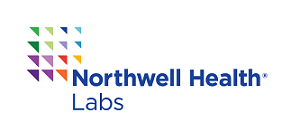Methodology
|
Tryptic Protein Fragmentation, purified with Immunocapture, Analysis by Liquid Chromatography-Tandem Mass Spectrometry (LC-MS/MS)
(This service is performed pursuant to an agreement with SISCAPA Assay Technologies Inc. covering US Patent 7,632,686)
|
Result Interpretation
Healthy individuals with intact, functioning thyroid: < or = 33
ng/mL
The reference ranges listed below, however, are for thyroid
cancer follow up of athyrotic patients and apply to unstimulated
and stimulated thyroglobulin (Tg) measurements. Ranges are based on
best practice guidelines and the literature, which includes Mayo
Clinic studies, and represent clinical decision levels.
Decision levels for thyroid cancer patients, who are not
completely athyrotic (ie, patient has some remnant normal thyroid
tissue), have not been established, but are likely to be somewhat
higher: remnant normal thyroid tissue contributes to serum Tg
concentrations 0.2-1.0 ng/mL per gram of remnant tissue, depending
on the thyroid-stimulating hormone (TSH) level.
Tg <0.2 ng/mL: Tg levels must be interpreted in the context
of TSH levels, serial Tg measurements, and radioiodine ablation
status. Undetectable Tg levels in athyrotic individuals on
suppression therapy indicate a minimal risk (<1%-2%) of
clinically detectable recurrent papillary/follicular thyroid
cancer.
Tg > or = 0.2 ng/mL to 2.0 ng/mL: Tg levels must be interpreted in
the context of TSH levels, serial Tg measurements, and radioiodine
ablation status. Tg levels of 0.2-2.0 ng/mL in athyrotic
individuals on suppressive therapy indicate a low risk of
clinically detectable recurrent papillary/follicular thyroid
cancer.
Tg 2.1 ng/mL to 9.9 ng/mL: Tg levels must be interpreted in the
context of TSH levels, serial Tg measurements and radioiodine
ablation status. Tg levels of 2.1-9.9 ng/mL in athyrotic
individuals on suppression therapy indicate an increased risk of
clinically detectable recurrent papillary/follicular thyroid
cancer.
Tg > or = 10 ng/mL: Tg levels must be interpreted in the context of
TSH levels, serial Tg measurements and radioiodine ablation status.
Tg levels of 10 ng/mL or above in athyrotic individuals on
suppressive therapy indicate a significant (>25%) risk of
clinically detectable recurrent papillary/follicular thyroid
cancer.
|

